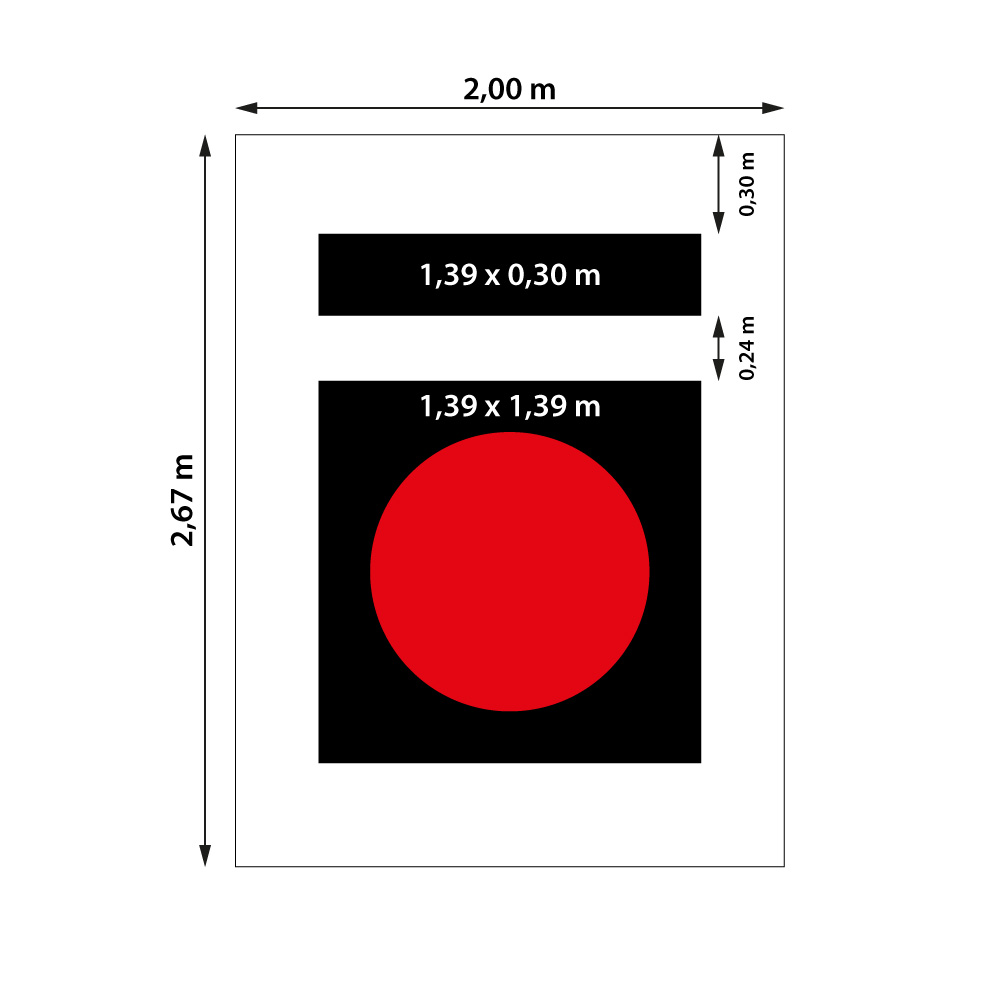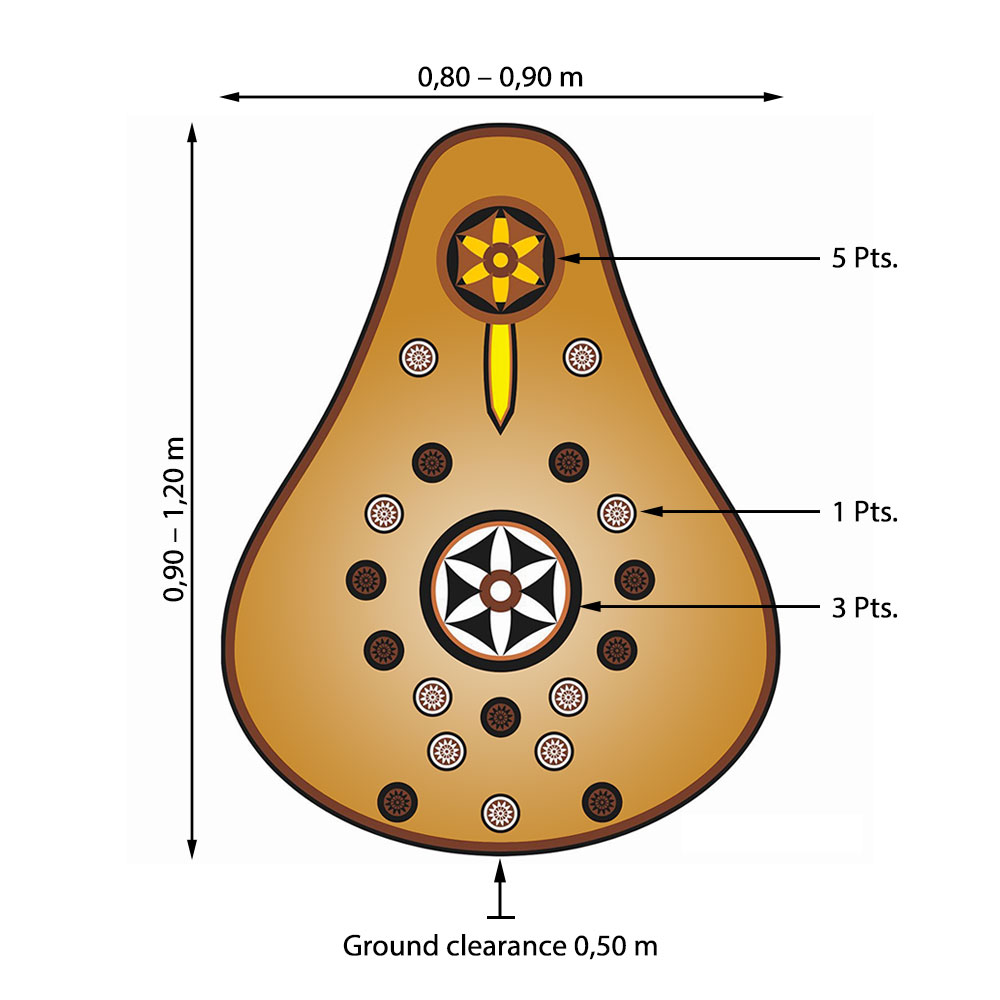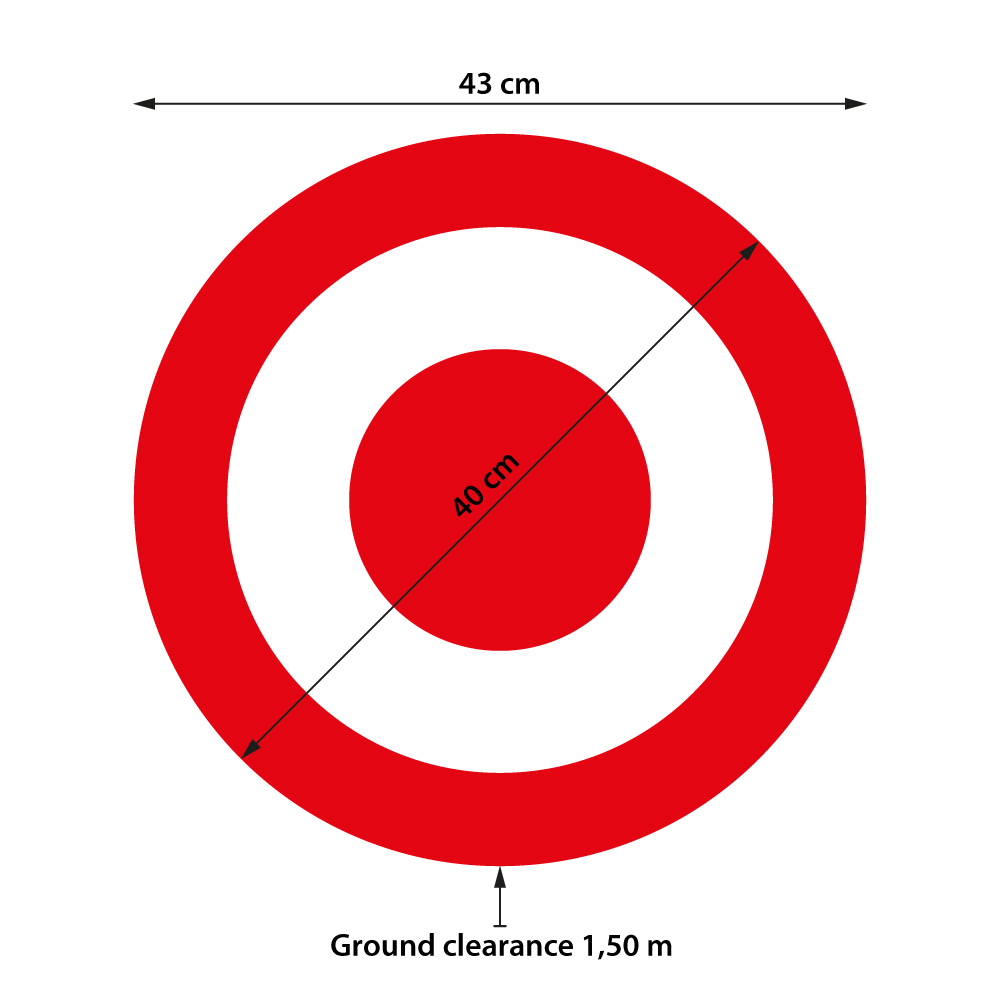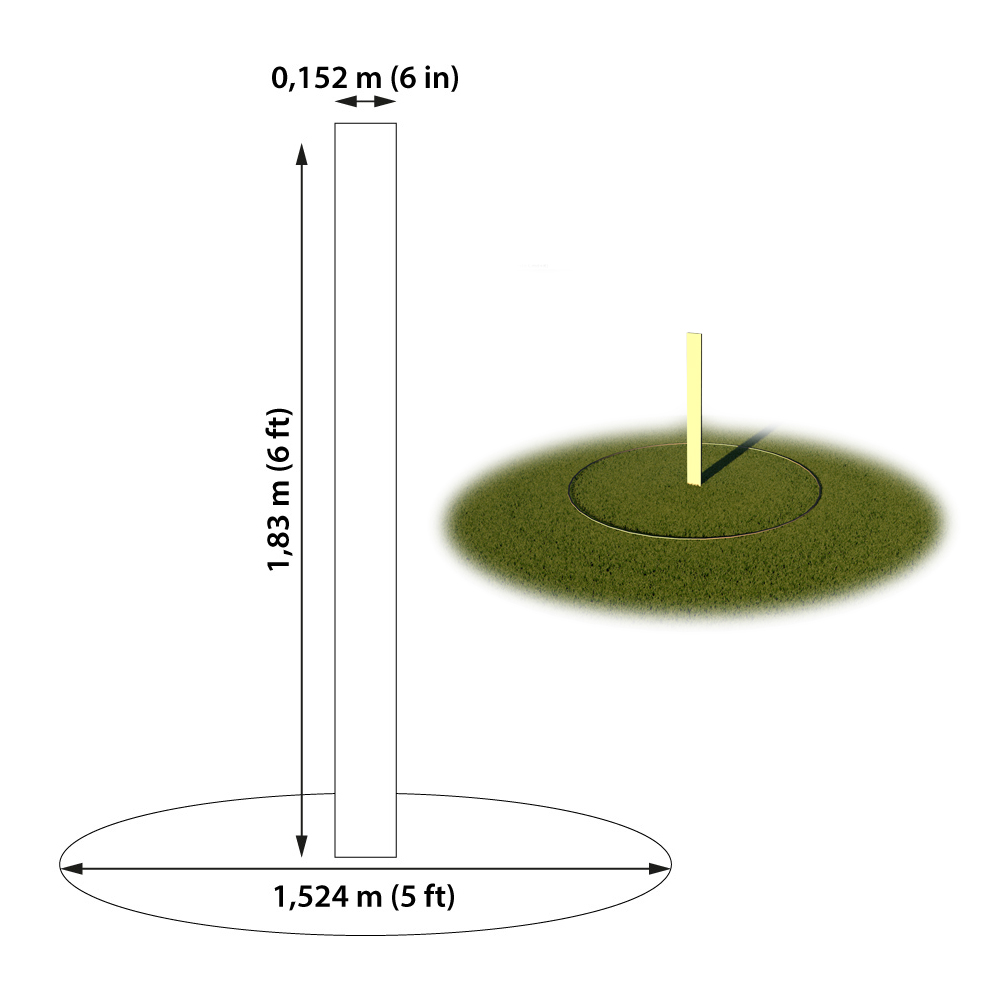. . .
Category: > 3 Arrows
Width: 2,00 m
Height: 2,67 m
Adaptation for T.A.I.
Shooting distance 120 m
6 arrows are to shoot
Historical Background:
As I stated earlier, an archer will bow to the Jung Gahn when first arriving at the jung. Also, just before an archer makes a first shot, he/she will give a slight bow to the target saying “Hwal bae oom ni da,” which means, “I am learning the bow.” If other members are present, they would reply, “Ma ni ma chu sayo”, which means, “Have many hits.” A novice archer would also bow to the target after the first hit of the day, while advanced archers would not.
In 1899, the visiting Prince Heinrich of Prussia expressed his astonishment to Emperor Gojong at a traditional archery demonstration. The emperor, impressed, decreed “let people enjoy archery to develop their physical strength” and established an archery club building. In the subsequent revival of Korean archery, the nature of the bow and the arrow was standardized, as was the range of the targets. Korean traditional archery now uses one specific type of composite bow, bamboo arrows, and a standard target at a standard distance of 120 bo (about 145 meters).
Width: 0,77 – 0,90 m
Height: 107 – 1,20 m
Adaptation for T.A.I.
Shooting distance: 70 - 120 m
6 arrows to shoot
Historical background:
Traditional made of leather, the word “Puta” is ethymologically related to the Persian word “Bute” which means “Jug or Pot made of clay”.
Putas found their final form in the 18th century. They were 107 centimeters in height and 77 centimeters in width, and the depth of the puta was about 8 to 10 centimeters. A pear shaped, double layered leather pillow would be placed into a wooden or reed frame, also covered with leather. The pillow would be filled with cotton seed or saw dust. After these steps, shapes in different colours would be drawn on the puta. Finally little bells would be attached to the bottom of the puta. The bells would make a sound when the puta were hit, thus informing shooters. Seeing a hit could be difficult due long distances. Despite the lack of concrete historical evidence regarding the meaning of shapes and colors on putas, one could speculate that it might be a way to create several different targets on the same puta. The purpose of the little bells is obvious however; they were to inform the archers or the audience of hits, as described above.
Since its inception, several different rules emerged and applied to puta shooting. Puta shooting competitions were called “puta koşusu” (puta run). Puta shooting, while differing for every okmeydanı (archery range; there were several across the Ottoman Empire and the Middle East) was usually done from a distance of 250-400 gez (165-265 meters) and the shooting was done from a place called “sofa”.
Source: Murat Özveri, Tirendaz, Turkey -> detailed information
Diameter: 40 cm
Ground clearance: 1,50 m
Adaptation for T.A.I.
Shooting distance: is given
Children may shoot half distance
3 arrows per Target are to shoot
3 targets to shoot - 1st: standing frontal, 2nd: kneeling,
3rd: standing with the back to the targets
Usually there are 3 sets of these targets in a given distance.. The archer shoots each target from 3 different positions (Standing frontally, kneeling and facing with your back). The archer shoots 5 arrows from each position. This shooting will be done 2 times (2 rounds = 90 arrows to be shot). All competitions are shot in a given order in one sequence without breaks or checking or training. The maximum number of points to be scored will be 900 points for the scoring 10/8/5 point (inner to outer ring) The archery target with a common three-zone layout, with specially enlarged central zone that favors shooting and sub-missionary archers (means instinctive archers) by increasing the chance of getting the maximum score, even with a larger spread of hits.
Source: Karol Pisarkiewicz, PSŁT, Poland
Width: 15,2 cm
Height: 183 cm
Adaptation for T.A.I.
Shooting distance: 30 - 100 m
6 Arrows are to shoot
Historical Background:
In England archers startet to practice at seven years of age and were expected to hit the Mark with the use of a War Bow at 220 yards, by the time they were 15 years of age. To achieve this you set up the wand at a short distance first, as your Archers got the hang of hitting it regularly, you then moved the wand outor increased the distance, usually by ten yards at a time until your archers by age and skill could hit the wand or mark at 220 yards or (Artillery shot) battle shot. The ancient word for Archery is “Artillerie”.
The willow ‘wand’ represented an enemy of course, but would be much harder to hit being so narrow, especially with an English Longbow. Competitive Wand Shoots are very rare these days, but in the area of Surrey, archers still shoot this competition. 100 yards for the Gents, 80 yards for the Ladies, and 60 yards for the juniors 60 yard is the shooting distance. The ‘wand’ is set in a ground circle with a diameter of 5 ft. A ‘wand’ hit scores 5 points and a hit in the circle still makes 1 point. There are also other competitions held by AOTT (Archers of the Tees) where you shoot from in a given order from different distances.




